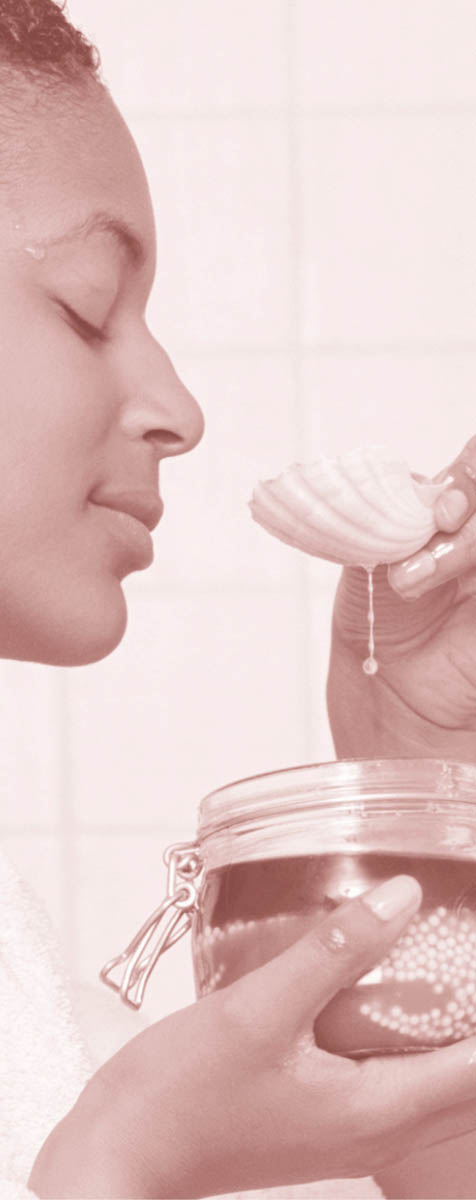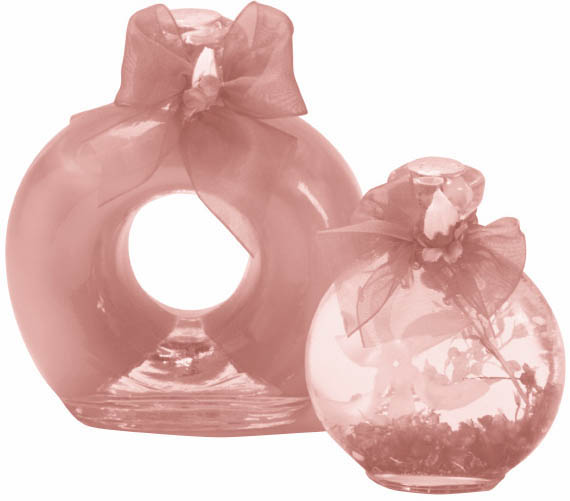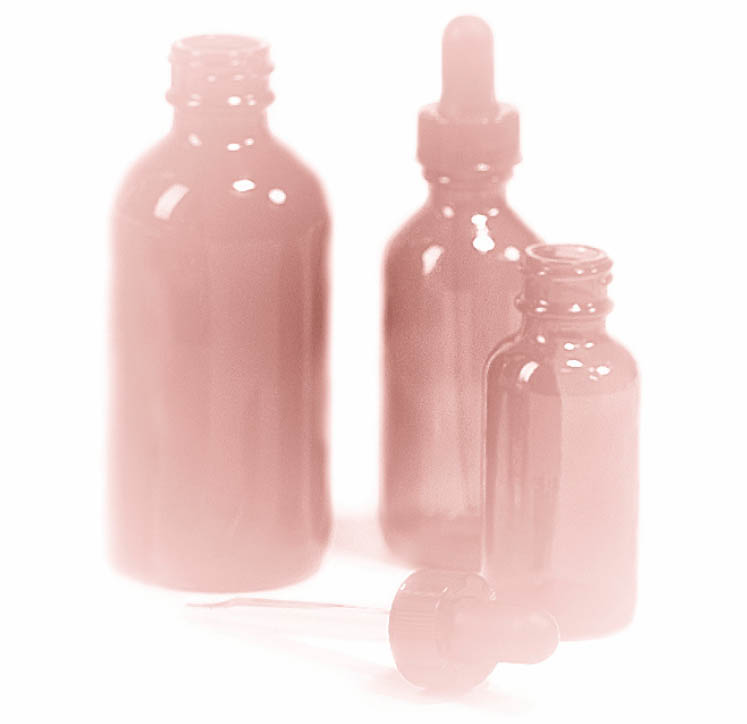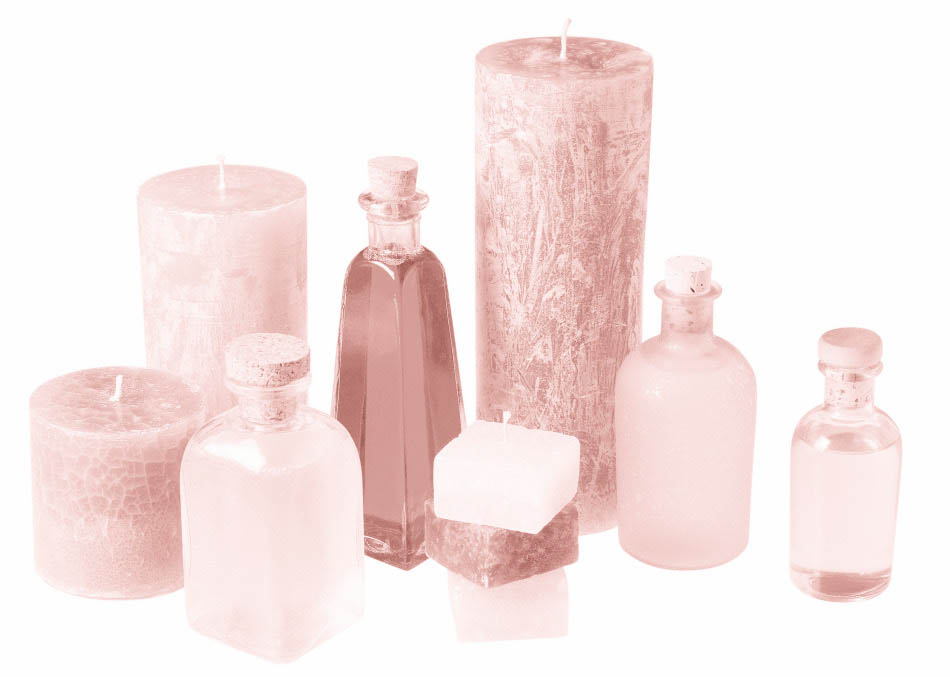

Interest in the use of natural aromatic oils has risen steadily over the past quarter-century as people have grown increasingly weary of the traditional treatments for ailments from minor skin problems to chronic fatigue and depression. Homeopathy, reflexology, herbalism, flower essence therapy, iridology, acupuncture, massage therapy, and many other complementary forms of alternative care are now available. If used responsibly, these modalities allow us to play a more active role in maintaining our health and well-being.
A significant outgrowth of the renewed interest in nonconventional self-care is the fascinating rediscovery of a cousin to the centuries-old practice of using aromatic oils to positively affect the human condition. Today, this practice is typically called aromatherapy, and its proper definition and scope are the subjects of considerable international discussion and debate. The most widely accepted description of aromatherapy encompasses the blending of plant essential oils to promote health, beauty, and well-being. This book concentrates on the incorporation of essential oils in combination with other natural plant extracts, both aromatic and unscented, into handmade skin-care products.
Aromatic oils are removed by various extraction techniques from leaves, petals, blossoms, barks, twigs, and other fragrant plant parts. Different extraction techniques produce diverse types of oils with different chemical makeups and uses. For example, rose essential oil extracted via the steam distillation method is very different from rose absolute, which is extracted with solvents. These differences do not necessarily mean that one oil is superior to another, but they often indicate the suitability of the oil for a particular purpose.
There are several types of aromatic oils, including essential oils and absolutes. Essential oils have historically been considered the purest form of aromatic plant material because they are extracted without solvents. As such, they are the oils most frequently used for skin-care purposes, and the most readily available. For the sake of ease, I typically use the term aromatic oils to refer to aromatic oils collectively and am more specific about types of oils as necessary.

I bent down to the vine, shaking to drink in its honey and its flower and my thoughts like heavy grapes, bramble-thick my breath — I could not, as I breathed, choose among the scents, but culled them all, and drank them as one drinks joy or sorrow suddenly sent by fate. I drank them all.
— Angelos Silcelianus, The First Rain
An Aromatic Profile
For Jan, making a cream for a friend is more than just combining proper ingredients and amounts. Rather, it is a loving expression of tender feelings that, in combination with the gentle plant oils she uses, serves to encourage and uplift the user. Jan’s creation of a product she calls Vicki’s Voice illustrates this point.
Vicki often experienced extreme anger and frustration and spent much of her time “screaming” inside. She expressed her anguish to Jan, who created a cream that combines essential oils with other plant materials. When Vicki applies the cream, she is reminded of the care taken to create it just for her. She remembers that she has freedom of voice and is able to express her feelings, whatever they are, and to make conscious decisions to laugh, speak, scream, or cry. This freedom allows Vicki to live a life in which her feelings no longer shackle her but are legitimate expressions of her individuality and humanity.
Until Jan started making lotions and creams, she hated spending time in the kitchen, which she described as the coldest place in her childhood home. Today, the formerly laborious chores of measuring, calculating ingredient amounts, and stirring are a stimulating part of the creative process. Jan’s Boulder kitchen, where she concocts fabulous formulas for her company, Body Way, is her aromatic playpen.
My favorite Body Way product is Petal Play, a cream with the look and feel of white chocolate mousse.
The benefits of incorporating aromatic oils and other unadulterated plant extracts into handmade toiletries are as diverse as the hundreds of plants from which the aromatics are taken, and can vary greatly from person to person. Some people experience the greatest satisfaction when they find the perfect blend of aromas to suit their taste or mood, while others enjoy the process of creating the base product regardless of the final aroma. Still others are most concerned about the effects of the aromatic oils on their skin and will sacrifice a pleasant smell to obtain the desired therapeutic effect. In any case, using aromatic ingredients from faraway lands to create potions that nourish both body and soul continues to be a time-honored and universal pleasure.
The recipes in this book call for pure and genuine aromatic plant oils, which I highly recommend to achieve maximum skin-care benefits. Though some people will no doubt be allergic to or otherwise adversely affected by certain pure oils, the likelihood of irritation is significantly reduced with these oils in comparison to synthetic oils. In addition, since you choose the ingredients, you can remove the offending ingredient(s) by a careful process of trial and error.
Some pure aromatic oils can be pricey, and synthetic fragrance oils can be used. Bear in mind, however, that the possibility of an adverse skin reaction is also increased if synthetic ingredients are used.

When making handmade skin-care products, you can combine different aromatic oils to create products designed to address very specific skin conditions. In addition, because many aromatic oils are used to affect mood and health, you can select different oils on the basis of your state of health and mind. A classic example is lavender essential oil, which is not only an excellent skin conditioner but also a gentle relaxant.
One of the distinguishing characteristics of an aromatic oil is its volatility rate, which affects not only how long its aroma lasts but also how its odor changes as it is exposed to air. Thus, a combination of three oils that are each known to quickly vaporize will be simplistic and short-lived. On the other hand, a combination of three oils with varying volatility rates will produce a mellifluous fragrance that beautifully highlights the individual characteristics of each oil.
The differences in oil volatility rates form the basis of the art of perfumery. So if your goal is to design a skin-care product to suit a particular skin type, and you also wish to take into account the fragrance of the finished product, you will want to consider the volatility rates of the oils you use. This is most often described by the particular “note” category into which the oil falls. These notes can be likened to the instruments in a symphony orchestra.
Top notes are the flutes and wind chimes of an aromatic blend and are composed chiefly of citrus oils. They are light and sweet, and the first inhalation immediately reveals their delicate and playful nature. Top notes can be sharp and haughty, and they always tend toward extremely high levels of volatility and mischievous activity. They vaporize quickly, though they continue to tease us with their playfulness by peeking out now and again.
Middle notes are the clarinets and violins of the aromatic symphony. They are the character of the blend, if you will, providing support for the top notes and lift and clarity for the base notes.
Base or bottom notes are the basses, bassoons, and timpani of the combination. They are mysterious, heavy, deep, and strong, with an extremely low volatility rate. Base notes are typically imperceptible at first, but without them, the top and middle notes would battle it out until they both simply dissolved into the air.
Sometimes an oil can take on different characteristics because of the other oils in the blend. For instance, lavender makes a wonderful middle note when combined with several citrus oils and fewer base notes. On the other hand, lavender oil performs more like a top note when mixed with several base notes and fewer top notes.
When used properly, aromatic plant oils are healing on a variety of levels. Although natural, these oils are extremely concentrated and must be used with caution. Take the time to become acquainted with their individual properties, cautions, and recommended uses.
Bear in mind that the guidelines for using aromatic plant oils are constantly evolving as additional research is conducted. In general, I offer these basic recommendations:
Bearing in mind that no one formula suits everyone, I have created seven different Aromatic Alchemy blends for you to add to the skin-care products you make using the formulas in this book.
To make the blends, first use separate droppers to measure each aromatic oil. Place the drops of oil into a clean glass bottle, and shake gently to mix. Allow the blend to sit for a few days to “mellow” before use.

Each of the blends in this chapter contains the CO2 Crew. The CO2 Crew adds remarkable anti-inflammatory, rejuvenating, and healing qualities to each Aromatic Alchemy blend. Depending on the other ingredients in the formula, it could also add a light golden tint. The CO2 Crew finds its way into nearly everything I make.
makes 1⁄8 ounce (3.5 g)
Use this blend for dry skin.

A nose in a million. Over the years, with the proper training, this can be developed until it is capable of identifying even the ghost of a fragrance — the crucial drop that lifts a perfume from the ordinary to the unforgettable. But first, you have to find those talented nostrils.
— Peter Mayle, Encore Provence
makes 1⁄8 ounce (3.5 g)
This special blend can be used for any skin type.
makes 1⁄8 ounce (3.5 g)
This blend helps soothe and heal cracked or inflamed skin.

makes 1⁄8 ounce (3.5 g)
Ideal for greasy, oily, or acne-prone skin.
makes 1⁄8 ounce (3.5 g)
Add this to products designed for normal to oily skin.
makes 1⁄8 ounce (3.5 g)
This is an excellent blend for dry and/or mature skin.
makes 1⁄8 ounce (3.5 g)
Try this blend to boost the quality of sallow, lifeless skin.